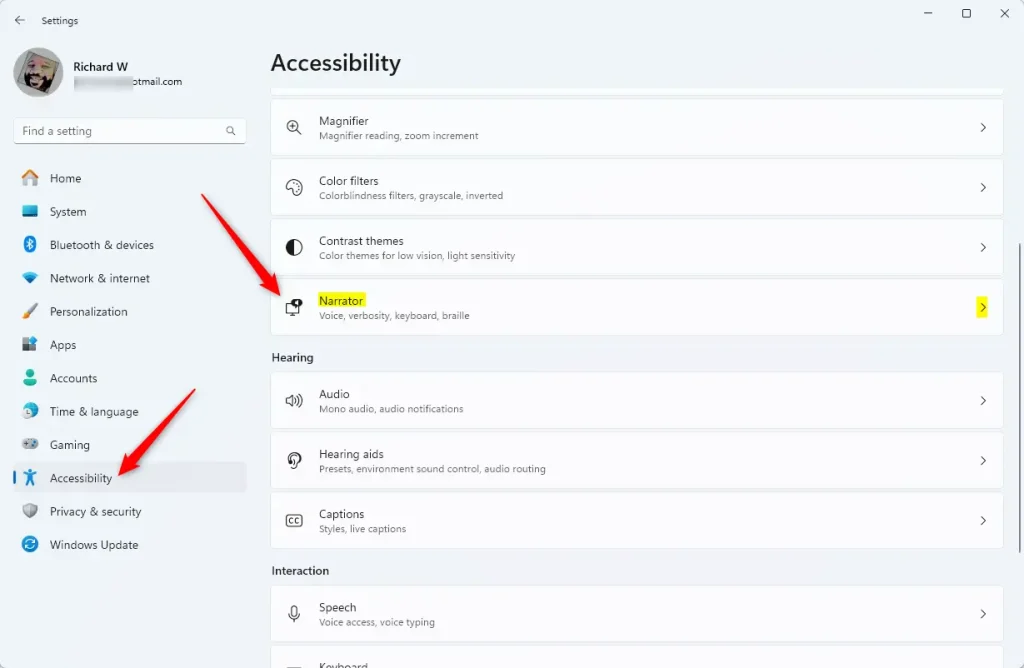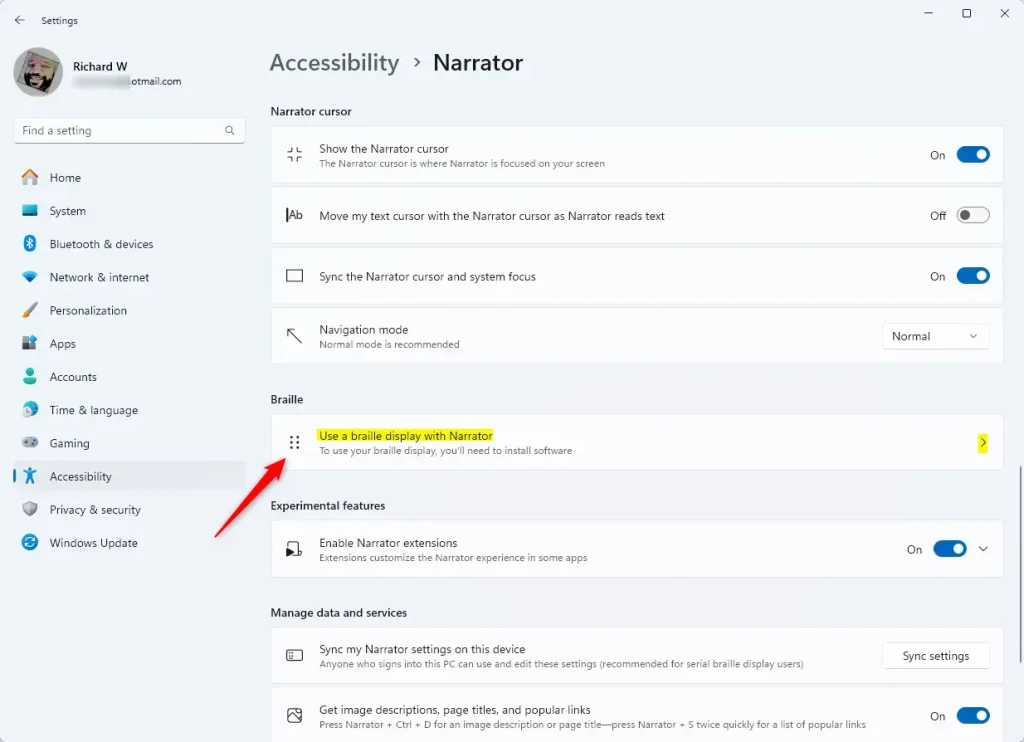This article explains how to change the input/output table types for a Braille display on Windows 11.
Narrator is a screen-reading app built into Windows that reads the text on your screen aloud and describes events for users with low vision or blindness.
When you use the Narrator app, you can turn on or off its keyboard shortcuts, launch it automatically, adjust the voice, speed, and volume, manage natural voices, lower other apps volume when Narrator is speaking, change Narrator audio output device, change verbosity level, emphasize formatted text, enable or disable Narrators phonetic reading, pause for punctuation, adjust how the Narrator read advanced details, adjust the way capitalized text is read, add a braille display with Narrator, change the input/output language for a braille display, and more.
When you add a braille display on Windows, you can also change the input and output table types with the display.
Changing the input and output table types on a braille display in Windows can help customize the display to better suit your needs, leading to improved efficiency. Different table types can also alter how text is displayed in braille, such as how certain characters or symbols are represented.
This can make reading and navigating through text on the display easier, enhancing your productivity. Additionally, some braille displays may support different languages or specific technical formats, which you can select by changing the input and output table types.
Change the input/output table types for a braille display on Windows 11
As mentioned above, users can change the input and output table types for a braille display on Windows 11.
Here’s how to do it.
First, open the Windows Settings app.
You can do that by clicking on the Start menu and selecting Settings. Or press the keyboard shortcut (Windows key + I) to launch the Settings app.
When the Setting app opens, click the Accessibility button on the left and select the Narrator tile on the right to expand it.

On the Narrator settings pane, under “Braille,” expand the “Use a braille display with Narrator” tile to access the braille page.

On the braille page, click the “Download and install braille” button to start the installation if not already installed.
Once installed, you will have the option to turn Braille on or off.
Under the section “Braille displays and drivers,” click on “Add a braille display.” Choose your Braille display manufacturer and connection type. You can change the Braille display input and output languages and table types under the “Braille display input and output” section.

Select one of the following options:
- Computer braille
- Uncontracted
- Contracted
That should do it!
Conclusion:
- Changing the input/output table types for a braille display on Windows 11 can enhance efficiency and customization.
- Altering table types can improve readability and navigation, leading to increased productivity.
- Different table types can modify how text is displayed in braille, adapting to individual preferences and needs.
- Selecting specific table types can support different languages and technical formats, further tailoring the braille display experience.

Leave a Reply Cancel reply